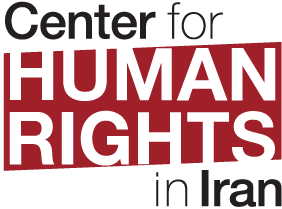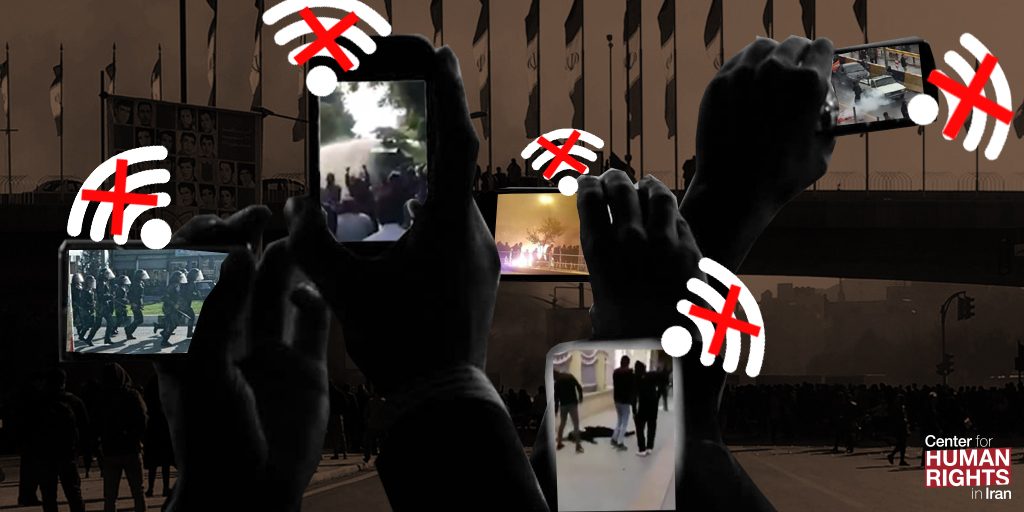#Lethal_andExcessiveForceAgainstProtestors
#inIranMustCease,#NewsBlackoutMustEnd

NOVEMBER 19, 2019

Families of Killed, Injured and Arrested Must Be Informed, Independent Investigations of State Actions Are Needed
Those Arrested Must Be Guaranteed Full Due Process Rights, Access to Attorneys
November 19, 2019—The authorities’ use of excessive force against protestors in Iran, which has included the use of live ammunition and has resulted in dozens of deaths, is a blatant and unjustifiable violation of international law and must cease, the Center for Human Rights in Iran said in a statement today.
CHRI condemns the violence, which citizen reports and videos out of Iran and eyewitnesses interviewed by CHRI indicate include security agents shooting at and killing unarmed civilians, and urges the authorities to employ nonlethal methods of crowd control, as required by international law.
“The security forces in Iran are beating, arresting and killing citizens who have come out into the streets to protest in order to terrify people into returning to their homes and silence dissent,” said Hadi Ghaemi, CHRI executive director.
In addition, the government’s unprecedented shut down of the internet, now into its fourth day, which Iran’s Telecommunications Minister Mohammad Javad Azari Jahromi confirmed was ordered by Iran’s Supreme National Security Council, and the corresponding near-complete news blackout, is facilitating the security forces’ ability to injure, beat and kill protestors with impunity.
Significant discrepancies between the Iranian government’s reports of deaths and other reports, including not only from citizens inside Iran but also that of Amnesty International, which has stated it has “credible reports” of more than 100 protestors killed, raise grave concerns regarding the accuracy of the government’s statements and the loss of transparency afforded by the news blackout. CHRI urges the international community to condemn both the state’s excessive force and the information blackout.

Guards at the Gate: The Expanding State Control Over the Internet in Iran provides an in-depth review of Iran’s internet policies and initiatives, in particular, the development of its state-controlled National Internet Network (NIN), which gives the government newly expanded abilities to control Iranians’ access to the internet and monitor their online communication.
An eyewitness in Karaj, west of Tehran, who asked not to be identified told CHRI. “We haven’t been able to post films of the protests and the violent response from the police and security forces, but…we have seen with our own eyes people being killed…they have been firing at people and beating them with batons for peaceful protests…The people don’t have weapons. These agents were armed.”
“There are more than 70 or 80 people who have been hospitalized here with bullet injuries. Several others have been admitted because of the effects of tear gas,” an eyewitness at a hospital in Shahriar, Tehran Province, told CHRI.
CHRI is also deeply concerned about reports that there has been no accounting for missing individuals who are feared injured, dead or detained. CHRI calls on the authorities to release the names of all those who have been killed or injured, as well as the individuals who have been arrested.
“In the Sadeghiyeh district of Tehran, I witnessed protesters being arrested. They were attacked with batons and dragged away,” a journalist told CHRI. “I saw about 10 to 15 people being arrested in a 10-minute period, which tells me the number of arrests has been very high. What’s causing concern is that nothing is known about the identity of the detainees or where they’re being held.”
Eyewitnesses have also told CHRI that the bodies of the slain protesters are not being released to their families. The bodies of all those killed should be immediately released to the families.
“There should be an independent investigation into any injuries or deaths sustained by protestors either on the street or once in state custody, and any officials implicated in unlawful violence should be held accountable,” said Ghaemi.
The authorities’ track record on this is poor; during the December 2017-January 2018 protests, there were consistent eyewitness accounts of severe beatings of protestors on the street, during transport to detention centers, and in detention centers, as well as deaths in state custody, that were never independently investigated and no officials were ever held accountable.
In addition, Iran’s pattern of issuing draconian sentences to intimidate and discourage protest raises grave concerns. The hardline newspaper Kayhan wrote on November 18, “Some reports indicate that judicial authorities are certain that the leaders of recent riots will be punished by execution through hanging. It is said that the crimes committed by rioters amount to ‘rebellion’ and their punishment under the law and Sharia is execution.”
CHRI calls on the authorities to guarantee that all those arrested will receive full due process rights, including access to counsel of choice, and urges the international community to reinforce this demand. Charges and sentences should also adhere to international standards; draconian sentences, including death sentences designed to intimidate and punish dissent, should not be issued.
Moreover, the above mentioned Kahyan report referenced “confessions” to support their calls for punishment. The Iranian authorities’ routine use of torture, both physical and psychological, to extract false, self-incriminating statements in order to discredit defendants and intimidate dissenters is well documented. No forced confessions should be extracted, broadcasted or used as evidence in court.
“We’ve seen this playbook before—in 2009, in January 2018, and now. The authorities brutalize the citizenry with impunity to quash dissent, parade them on state TV to deliver so-called ‘confessions,’ and then put them behind bars to silence them,” Ghaemi said.
“But the persistence of street protests, and the continued willingness of lawyers, activists, and journalists to go to prison rather than submit to the state’s repression, prove that the people will not relinquish their rights, no matter the state’s brutality,” he added.
The protests began in more than 50 cities throughout Iran including Tehran, Mashhad, Shiraz, Isfahan, Tabriz, Qazvin, Kermanshah, Oroumiyeh, Marivan, Sanandaj, Saveh, Behbahan, and Sirjan on Friday, November 15, after the government announced gasoline price hikes.
Videos shared on Twitter and the Telegram messaging app showed government offices, police stations, banks, and fuel pumps being set on fire, and police and security forces firing tear gas canisters and using water cannons to disperse the protesters while attacking them with batons.
The protests began peacefully, but violent responses by police and security forces reports quickly escalated the confrontations and the protests spread.
As of Saturday, November 16, the government had blocked internet access for most of the country, and reports of deaths began to emerge, and by November 17, officials were blaming foreign countries for fomenting the unrest, and warning of consequences if crowds refused to disband. Iran’s Islamic Revolutionary Guard Corps (IRGC) said they were ready to “take decisive and revolutionary action against any continued moves to disturb the people’s peace and security.”
Several video clips that have slipped through the Internet blockade in Iran show security forces firing directly at the protesters.
There is no reliable information on how many protesters have been arrested. On November 17, Fars news agency, affiliated with the security establishment, reported the arrest of “about 1,000” people.
Fars also reported that demonstrations had taken place throughout the country, adding that “Compared to January 2018 protests, the level violence and damage has been more extensive and destructive and therefore there has been an increase in the loss of lives and property. The most destruction to the public property was reported in Khuzestan, Tehran, Fars and Kerman provinces.”
An eyewitness in Tabriz told CHRI: “Most public spaces have been closed and there are more police security forces in the streets than people, including plain-clothed special agents. The situation is much more around the University of Tabriz. It’s a virtual martial law.”
“A few days after the shutdown of the internet, we now know why the authorities in Iran did it,” said Ghaemi. “They wanted to shut down the country and commit their acts of violence on the street without fear of accountability for the bloodshed. Basically, the government granted impunity to its men of violence.”
No comments:
Post a Comment